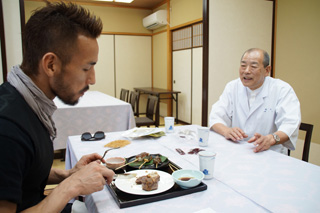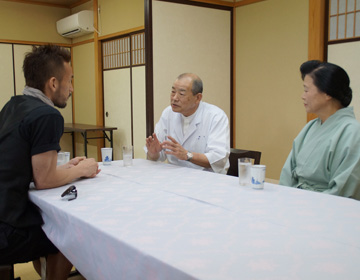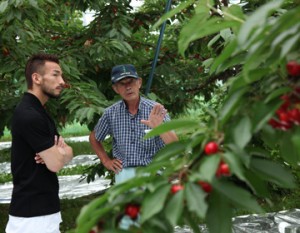Tamakonnyaku, a well-known type of konnyaku in Yamagata Prefecture
While Gunma Prefecture is Japan’s largest producer of konnyaku sweet potatoes, the raw material for konnyaku, in 2012, Yamagata City in Yamagata Prefecture is the largest consumer of konnyaku in Japan. Behind the consumption of about twice as much konjac as in the Tokyo metropolitan area lies the existence of “tama-konjac,” which is eaten at festivals, athletic meets, and other events.
The Yamagata way of eating konjac is to boil round konjac in a pot with soy sauce, sake, and surumeika, skewer it, and eat it with mustard. Tamakonnyaku ” is a common sight at tourist attractions and places where people gather. Everyone from children to adults can easily eat it, and it has become an established fast food.
In Yamagata Prefecture, there are several restaurants specializing in konjac cuisine. One of them, Tanno Konnyaku in Narashita-juku, is famous for its many varieties of konjac dishes. The owner, Masuo Tanno, who was originally a konjac manufacturer, opened Narashita-juku Tanno Konnyaku in 1986 with the hope that people would become more familiar with konjac and know how delicious it is.

Konjac as a Health Food
Mr. Tanno cooks konjac under the motto, ” I want to see your smile and send you good health.
Konjac has been attracting attention as a health food in recent years. It is especially popular among health-conscious people because of its low calorie and carbohydrate content, yet rich in dietary fiber. Dietary fiber has been shown to have many physiological functions, such as preventing constipation and regulating bowel movements, as well as suppressing elevated blood glucose levels and lowering blood cholesterol levels. The fact that it can be expected not only to help people lose weight, but also to improve their physical condition, is another reason why it has become so popular. In order to make konjac more accessible, Mr. Tanno is developing a variety of konjac products , including not only prepared konjac to add color to the dining table, but also dessert konjac that combines konjac with fruits and vegetables.

The Secret of Konjac’s Deliciousness
There are two major secrets to the delicious taste of Mr. Tanno’s konjac. The first is high-quality water. He makes konjac using “Masuei no mizu,” alkaline natural water rich in calcium, pumped up from more than 200 meters below the ground. The temperature of the underground water is kept at a constant 18 degrees Celsius, and in winter, the difference in temperature between the outside temperature and the spring water is so great that steam rises from the spring water. This stable temperature of calcium-rich groundwater produces konjac without any peculiarities or odor.
The second factor is the skill and passion of the craftsmen. Konnyaku changes its appearance with the seasons, and the craftsmen must be sensitive to these changes and respond accordingly. All kinds of conditions, such as the time of leaving the konjac to stand and the temperature at which the lime is dissolved, also affect the flavor of the konjac. He is particular about such small details in the production of his konjac.
Mr. Tanno also exhibits and sells his tama-konnyaku at product fairs throughout Japan, and while doing so, he visits local delicacies and conducts research in order to make the best use of them in konnyaku cuisine.
In the beginning, we didn’t have a cook, so we made our own dishes by trial and error,” he says. Konnyaku can be flavored in any way, it is just a matter of how to reproduce the tactile sensation,” says Tanno. This passion for exploring konjac cuisine is probably one of the reasons for the delicious konjac.
If you have not yet discovered the true taste of konjac, I encourage you to try Tanno’s konjac dishes. It will completely change your impression of konjac.





